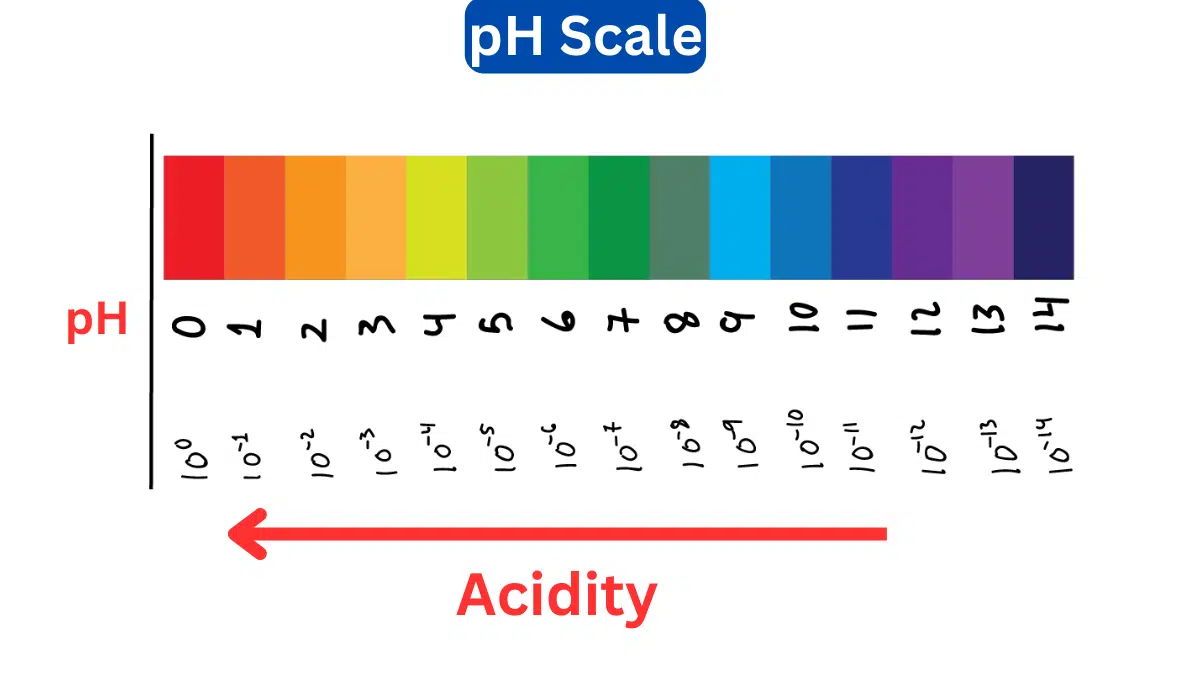Base Dissociation Constant (Kb)-Calculation, Examples, and Uses
The base dissociation constant (Kb) measures the strength of the acid-base interaction between a proton (H+) and a conjugate base.
What is the base dissociation constant (Kb)?
The base dissociation constant is defined as the ratio of the dissociation constants of the acid and its conjugate base at the same pH. The base dissociation constant, denoted Kb, is a quantitative measure of the strength of a base in solution. It represents the extent to which a base dissociates into its conjugate acid and a hydroxide ion in an aqueous solution.
Calculation of Base Dissociation Constant
The base dissociation constant can be calculated as follows:
Consider a base B dissociating into its conjugate acid AH+ and a hydroxide ion OH–:
B + H2O ⇌ AH+ + OH–
The base dissociation constant Kb is defined as:
Kb = [AH+][OH–] / [B]
Where:
[AH+] is the concentration of the conjugate acid.
[OH–] is the concentration of the hydroxide ion.
[B] is the concentration of the base.
A larger Kb value indicates a stronger base that dissociates more readily in water. A smaller Kb indicates a weaker base that does not dissociate as easily.
The pKb is also often used, which is defined as:
pKb = -log(Kb)
The pKb allows easier comparison of base strength. A lower pKb indicates a stronger base.
Examples of Base Dissociation Constant (Kb)
Here are some examples of calculating the base dissociation constant (Kb) and pKb:
- For ammonia (NH3), which dissociates into ammonium (NH4+) and hydroxide (OH–):
NH3 + H2O ⇌ NH4+ + OH–
If at equilibrium:
[NH3] = 0.20 M [NH4+] = 0.05 M [OH–] = 0.05 M
Then:
Kb = [NH4+][OH–] / [NH3] = (0.05)(0.05) / 0.20 = 1.25 x 10-2
pKb = -log(1.25 x 10-2) = 1.90
- For methylamine (CH3NH2), which dissociates into methylammonium (CH3NH3+) and hydroxide:
CH3NH2 + H2O ⇌ CH3NH3+ + OH–
If at equilibrium:
[CH3NH2] = 0.10 M [CH3NH3+] = 0.04 M [OH–] = 0.04 M
Then:
Kb = [CH3NH3+][OH–] / [CH3NH2] = (0.04)(0.04) / 0.10 = 1.6 x 10-3
pKb = -log(1.6 x 10-3) = 2.8
Table of Dissociation Constant of Base
Here is a table comparing the base dissociation constants (Kb) and relative strengths of some common bases:
| Base | Kb Value | pKb Value | Relative Strength |
|---|---|---|---|
| Sodium hydroxide (NaOH) | Very large | Very small | Very strong |
| Potassium hydroxide (KOH) | Very large | Very small | Very strong |
| Calcium hydroxide (Ca(OH)2 | 5.5 x 10-3 | 2.26 | Strong |
| Ammonia (NH3) | 1.8 x 10-5 | 4.74 | Weak |
| Methylamine (CH3NH2) | 4.4 x 10-4 | 3.36 | Weak |
| Aniline (C6H5NH2) | 3.8 x 10-10 | 9.42 | Very weak |
Uses of the base dissociation constant
Here are some important uses of the base dissociation constant (Kb):
- Determines base strength: The value of Kb indicates the strength of a base in solution. Strong bases have large Kb values while weak bases have small Kb values.
- Calculates pH of base solutions: The Kb of a base can be used to calculate the pH of its solutions. The hydroxide ion concentration from the dissociation of the base is used to determine the pH.
- Calculates equilibrium concentrations: Kb can be used to calculate the equilibrium concentrations of a base and its conjugate acid in solution once the initial concentrations are known.
- Compares base strengths: The pKb allows easy comparison of the strengths of different bases, with lower pKb indicating a stronger base.
- Determines solubility of salts: Some salts like metal hydroxides can be calculated from the Kb of the dissolved hydroxide base.
- Elucidates structure-function relationships: Trends in Kb values among chemical families help understand how molecular structure affects basicity.
- Explains acid-base properties: The Kb helps explain the relative acidity and basicity of substances and their acid-base behavior.
- Predicts acid-base reactions: Kb values help predict the direction and extent of acid-base reactions based on the relative base strengths.





Leave a Reply